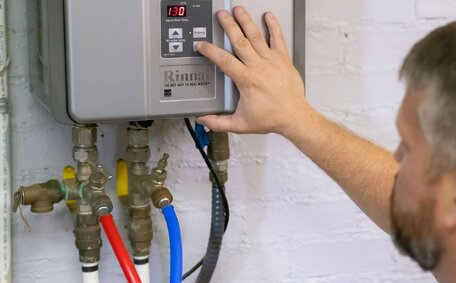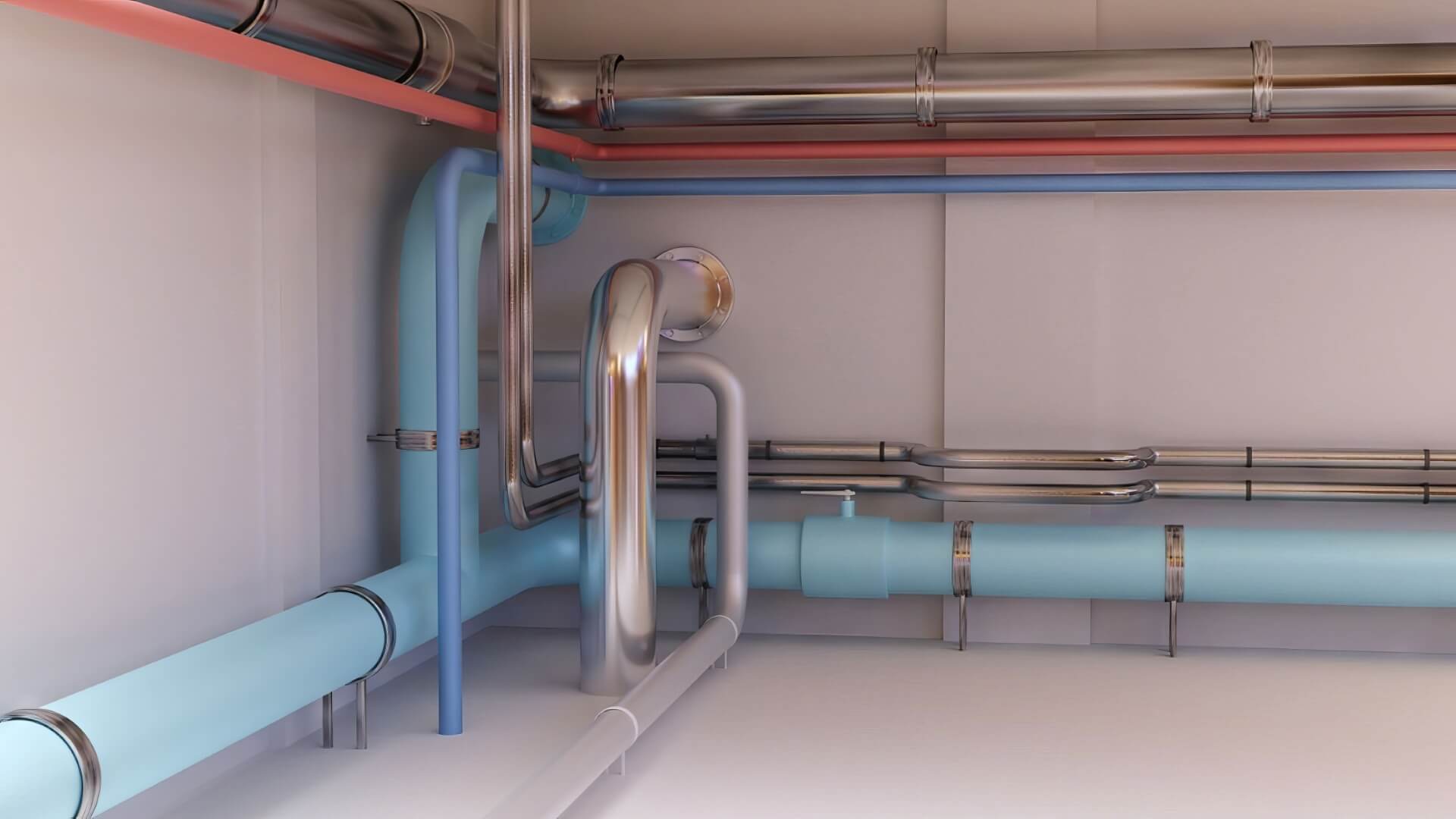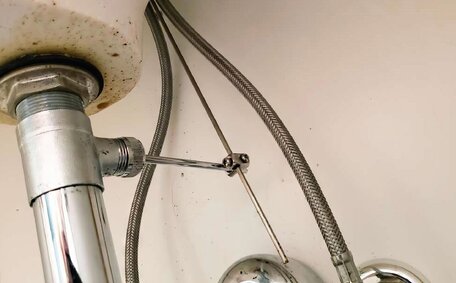Introduction to Pipe Relining
Pipe relining is a modern plumbing technique that renews old, damaged pipes without the need for full replacement. The process can also restore flow capacity and integrity at a fraction of the cost and disruption of traditional pipe replacements.
It involves inserting a resin-saturated liner into the existing pipe, then curing it to form a smooth, seamless new pipe within the old one.
At Glenwood Plumbing, we specialise in all aspects of pipe relining for residential and commercial customers across Glenwood and the greater Sydney area.
With years of hands-on expertise, we handle everything from inspection and preparation to liner insertion and curing. We work closely with industry-leading manufacturers to utilise high-quality epoxy resins and liners proven to withstand decades of use.
Pipe relining is most commonly used to address root intrusion, corrosion damage, cracks, and accumulation of scale or buildup in drain lines. By extending the lifecycle of ageing pipes, relining prevents water damage, limits property damage, and reduces waste.
It’s also an excellent preventative measure to reinforce pipes before they fail. We’ll cover the various materials and processes involved in relining in more detail throughout this article.
Understanding the Pipe Relining Process
The pipe relining process involves several key steps to rehabilitate pipes without excavation or pipe replacement. It begins with a camera inspection to assess damage and measure the pipe. We then use high-pressure water jets to clean the pipe walls and prepare the surface.
We saturate a felt liner denture with a thermosetting resin - typically epoxy or polyester resin that cures rock-hard. We insert this flexible liner into the pipe and expand it to fit using air pressure.
The resin-saturated liner bonds to the old pipe walls as it cures. Finally, lateral connection points are reopened once cured. The result is a new pipe-within-a-pipe with excellent flow and longevity.
Pipe relining restores structural stability, flow rate, and integrity that may have been compromised by age, roots, cracks, scale buildup, and other common issues. The materials used are extremely durable, safe for drinking water contact, and also used in sewer and potable water systems worldwide.
Step-by-Step Process of Relining a Pipe
- Initial Pipe Inspection: We thoroughly inspect the pipe condition using a camera to locate damage, measure the diameter, and ensure no blockages or obstructions.
- Pipe Preparation: The pipe is completely drained and dried before crews scrub the walls to remove built-up contaminants and prepare the surface.
- Felt Tube Impregnation: The felt liner tube is saturated with epoxy or polyester resin per the manufacturer’s specifications.
- Tube Insertion: The saturated liner tube is inserted into the pipe and gradually inflated using air pressure until it contacts and adheres to the pipe walls.
- Curing Process: The resin-saturated liner undergoes controlled curing via hot water, steam, or UV light dependent on resin type. Curing hardens the liner into a smooth, jointless new pipe.
- Lateral Reinstatement: Once fully cured, crews can also used robotic cutters to reinstate lateral connections and service lines, restoring flow.
- Final Testing & Inspection: We camera inspect the renewed pipeline and test as needed to ensure correct installation and operation.
Materials Used in Pipe Relining
Pipe relining utilises a variety of durable, drinking water-safe materials to rehabilitate pipes. The specific compounds used depend on pipe material, diameter, environment, and other project-specific factors. Still, the materials fall into two main categories – thermoset resin systems and the textile liners they saturate.
Thermoset resin systems come in epoxy, polyester, and vinyl ester options. Epoxy resins are most common, providing unmatched strength, but polyester and vinyl work well for certain applications. We use reline material of industry-leading formulations and adhere to strict quality control standards regarding safety and performance.
The textile liners themselves consist of needled felt or fibreglass mats woven into tubes. The textile liners themselves consist of needled felt or fibreglass mats woven into tubes. Our manufacturing partners are industry leaders in textile tube engineering and fabrication.
Liner tubes must meet specifications on thickness and load-bearing strength.
In the following sections, we’ll explore the most common pipe relining materials, their technical properties, and how we select the optimal compounds for any given relining project.
Epoxy Resin
Epoxy resin is the most widely used and reliable thermoset resin for pipe relining across potable, waste, and rainwater applications. It offers unmatched bonding strength, durability, and chemical resistance. When combined with textile liners, epoxy resin creates a robust structural barrier that restores integrity to compromised pipes.
We use 100% solids, high-performance epoxy formulations approved for direct and indirect drinking water contact. Our preferred epoxy resins exceed industry standards for factors like flexural modulus, adhesion, hardness, and heat distortion. They also cure quickly at ambient and elevated temperatures using water, steam, or UV light.
Once cured, the epoxy liner resists corrosion, abrasion, roots, and bacterial attack. It also withstands being exposed to a wide pH range as well as various solvents and fuels. Thanks to these well-rounded properties, epoxy liners provide a minimum 50-year service life under normal conditions.
Beyond potable applications, we rely on epoxy for relining deteriorated pipes in chemical plants, refineries, and other harsh industrial environments. It bonds well to metals and a variety of plastics too. We pride ourselves on selecting the optimal grade and class of epoxy resin for superior pipe renewal in any situation.
Polyethylene
Polyethylene offers an alternative relining material for pipes requiring more flexibility and impact resistance. It consists of extremely durable HDPE or crosslinked polyethylene compounds fused into liner tubes. Polyethylene has some key advantages over other materials:
- High tensile strength and elongation allow it to expand and conform to misshapen pipes.
- More flexible and better shock/impact absorption than epoxy or polyester.
- Resists abrasion, corrosion, and stress cracking extremely well over time.
We often recommend polyethylene where pipes show heavy deformation or offset joints that rigid liners can’t accommodate. Polyethylene also works well for lateral pipelines with high dynamic loading or exterior stresses. It provides good chemical resistance for non-potable drainage applications too.
The material does have some downsides, namely heat resistance limitations and reduced structural strength versus epoxy. We don’t use polyethylene for potable water systems for this reason but rely on it solely for drainage and rainwater applications. Appropriate formulation allows polyethylene liners to last upwards of 50 years.
PVC
PVC (polyvinyl chloride) offers another robust thermoplastic option for pipe relining applications. It provides exceptional resistance to abrasion and corrosion while maintaining decent flexibility. We typically use PVC liners in non-potable drainage systems and germicidal waste drainage.
PVC liner compounds contain UV stabilisers and plasticizers to facilitate installation plus crosslinking agents or flame retardants per application requirements. The material is naturally white but can be pigmented to any colour during manufacturing. It also fuses well to itself, so we can weld PVC liners into continuous lengths onsite.
Once installed, PVC liners maintain smooth water flow and prevent buildup or infiltration over decades. The material withstands chemical attack from acids, alkalis, salts, and oils often found in industrial drainage applications too. Limitations mainly relate to temperature as extremely hot water can soften PVC over time.
We tend to recommend PVC for refineries, factories, and water treatment plants with non-potable piping prone to heavy use and chemical corrosion. It pairs well with concrete, clay, and galvanised steel pipes given PVC’s natural rigidity. Overall, PVC liners present another durable and economical solution for drainage system renewal.
Glass Fiber
Glass fibre presents an exceptionally rigid liner material well-suited for denture relining of structurally compromised pipes. Also known as GRP (glass-reinforced plastic) or fibreglass, it contains fine glass filaments wound into a felt liner then saturated with thermoset resin.
The materials high strength-to-weight ratio increases the liners rigidity and ability to withstand external pressures compared to felt alone. GRP also resists corrosion and most chemical attacks.
We typically recommend soft relining with glass fibre for pipes situated under foundation slabs or other structural elements. The rigidity combats ground shift damage better than flexible liners. GRP also suits large diameter pipes where felt liners may sag over time.
Glass fibre performs well in high-temperature applications up to 120C like steam lines or condenser piping. It bonds effectively to metals and itself, allowing reliable repairs even on severely damaged sections.
The smooth interior wall of glass fibre liners maintains flow rates too. We rely on advanced resin transfer moulding techniques to uniformly saturate the glass filaments without voids or dry spots for long-term durability.
Overall, glass reinforced plastic presents a uniquely rigid, corrosion-proof solution ideal for renewing structurally critical pipelines subject to steam, moisture, chemicals, and mechanical damage.
Felt Tubes
Felt tubes form the textile liner that transports and holds resin during the pipe relining process. They consist of tightly needled polyester or polypropylene felts woven into tubes of various diameters and lengths. We use industry-leading designs optimised for resin saturation, flexibility, tear and impact resistance.
These felt tubes serve as the inner layer against the old pipe wall after impregnation and installation. Felt offers some key benefits as a pipe lining medium:
- High wicking action draws resin evenly into the tube walls for consistent curing.
- Ability to stretch and conform to off-round or non-uniform pipe shapes.
- Customisation to exact pipe dimensions based on inspection and measurement.
- Tear resistance during installation in compromised pipes.
We primarily use polyester felt wrapping hoses due to the material’s wetting properties, chemical resistance and temperature range. We primarily use polyester felt wrapping hoses due to the material’s wetting properties, chemical resistance and temperature range.
Tube walls maintain excellent flexibility even in cold conditions. Polypropylene also suits acidic chemical lines.
The right tube ultimately helps the resin form a smooth, jointless new pipe able to last 50+ years. Our intimate knowledge of felt tube engineering allows proper material and strength selection for optimised structural renewal.
Safety and Effectiveness of Pipe Relining Materials
At Glenwood Plumbing, safety is our top priority when selecting materials for potable water system relining. We only use epoxy resins and liners certified as safe for drinking water contact by health agencies worldwide. These undergo rigorous toxicological testing to ensure they don’t leach any harmful compounds into the water supply.
Our preferred epoxy formulations provide a protective barrier that prevents pipe corrosion, extending longevity beyond 50 years. Our preferred epoxy formulations provide a protective barrier that prevents pipe corrosion, extending longevity beyond 50 years. We also rely on impact-resistant felt liners designed for reliable resin retention and curing consistency. Advanced engineering ensures the materials withstand pipe deformities while providing exceptional tear resistance.
We adhere to best practises around handling, wetting, insertion, and curing to deliver optimum liner performance. This includes controlled humidity levels, regulated cure temperatures, and strict cure time adherence. We then camera inspect for proper adhesion, integrity, and smoothness - ready to safely transport drinking water.
In summary, our rigorous quality control and installation protocols, coupled with industry-leading liner materials, provide reliable, long-term pipe renewal without compromising safety. We’re committed to building community trust and assurance regarding potable water system relining.
Longevity and Environmental Benefits
One of the biggest appeals of pipe relining is preserving pipes for decades versus replacement. Correctly installed liners withstand corrosion, abrasion, temperature fluctuations and mechanical stresses for 50+ years. Epoxy and polyester resins retain physical properties indefinitely, extending service life beyond newly installed pipes.
Relining also consumes far fewer resources than tearing out and replacing pipes. It minimises digging, ground disruption, construction debris, and the energy-intensive manufacturing of new piping. We recycling used resins/containers and focus on reducing liners to exact pipe dimensions for conservation. Relining also consumes far fewer resources than tearing out and replacing pipes.
For property managers and municipalities seeking sustainable pipe renewal solutions, relining provides extreme long-term viability with minimal environmental impact. The technology allows preserving existing infrastructure while upholding safety and reliability for generations.






